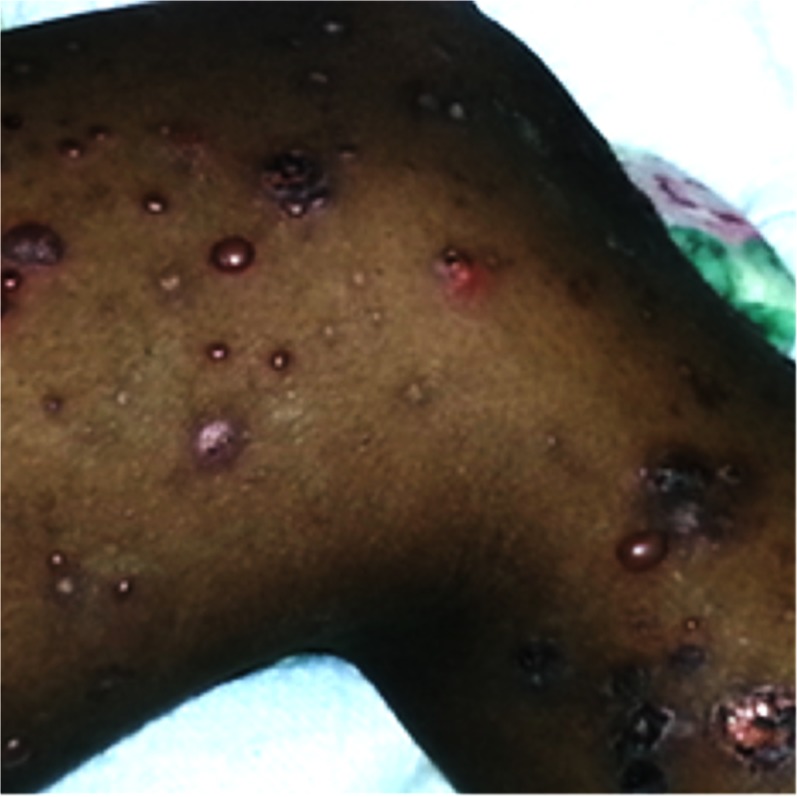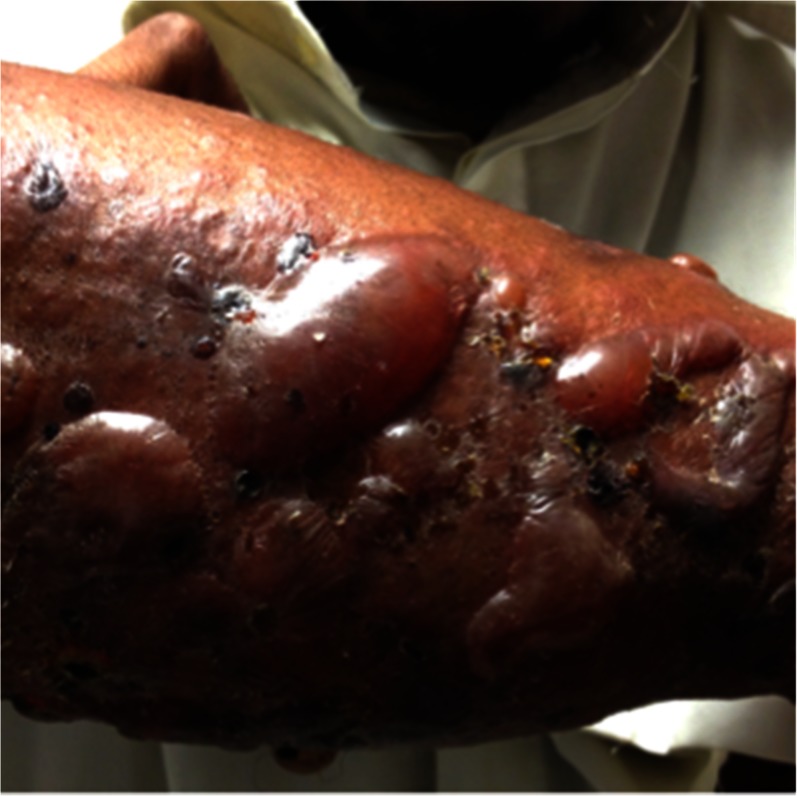A previously healthy 28-year-old man presented with a rash for 1 month. He had taken griseofulvin for a week prior to rash onset. He had visited two ERs and was given minocycline and valacyclovir, followed by acyclovir, hydroxyzine and low-dose oral steroids, with no improvement. On presentation to our clinic, he had vesicular lesions and large bullae over his forearms and thighs (Figs. 1 and 2). No mucosal lesions were present. Lab test results demonstrated WBC 10.2 K/cmm with 8.4% eosinophils. Perilesional skin biopsy showed spongiotic dermatitis with eosinophils, with direct immunofluorescence positive for subepidermal IgG and C3 depositions consistent with bullous pemphigoid. He was treated with oral prednisone and clobetasol ointment, with improvement.1
Figure 1.
Vesicular lesions on the leg of a 28-year-old man following griseofulvin exposure.
Figure 2.
Tense bullae on the forearm with negative Nikolsky sign.
Over 50 agents have been implicated as a cause of drug-induced bullous pemphigoid (DIBP), including diuretics, ACE inhibitors, and antibiotics.2 – 5 Unlike classic bullous pemphigoid, DIBP occurs in younger patients, and relapses are rare.3 Eosinophilia is often seen on lab tests, and symptoms may persist for up to 3 months after drug exposure. In our patient, griseofulvin was suspected as the trigger. Vesicular lesions are often misdiagnosed as herpetic infection, which may delay diagnosis and management. DIBP should be considered in young patients presenting with bullous lesions with recent exposure to a new medication.
Compliance with Ethical Standards
Conflict of Interest
The authors declare that they do not have a conflict of interest.
REFERENCES
- 1.Pacheco D, Lopes L, Soares-Almeida L, Marques MS, Filipe P. “Half-half” blisters in bullous pemphigoid successfully treated with adjuvant high-dose intravenous immunoglobulin. Acta Dermatovenerol Alp Panonica Adriat. 2012;21:59–61. [PubMed] [Google Scholar]
- 2.Ahronowitz I, Fox L. Severe drug-induced dermatoses. Semin Cutan Med Surg. 2014;33:49–58. doi: 10.12788/j.sder.0062. [DOI] [PubMed] [Google Scholar]
- 3.Stavropoulos PG, Soura E, Antoniou C. Drug-induced pemphigoid: a review of the literature. J Eur Acad Dermatol Venereol. 2014;28:1133–40. doi: 10.1111/jdv.12366. [DOI] [PubMed] [Google Scholar]
- 4.Lee JJ, Downham TF., 2nd Furosemide-induced bullous pemphigoid: case report and review of literature. J Drugs Dermatol. 2006;5:562–4. [PubMed] [Google Scholar]
- 5.Walsh SR, Hogg D, Mydlarski PR. Bullous pemphigoid: from bench to bedside. Drugs. 2005;65:905–26. doi: 10.2165/00003495-200565070-00002. [DOI] [PubMed] [Google Scholar]




